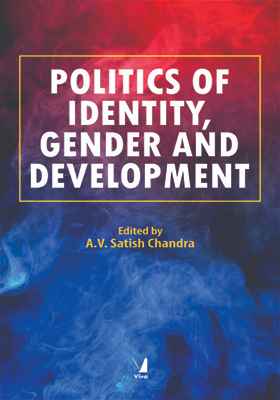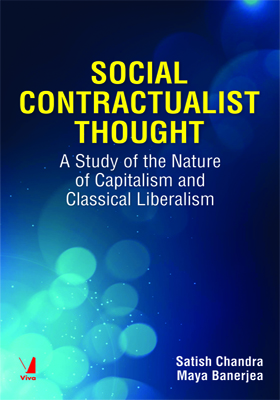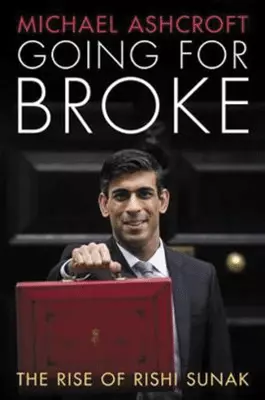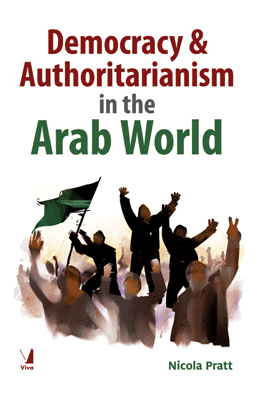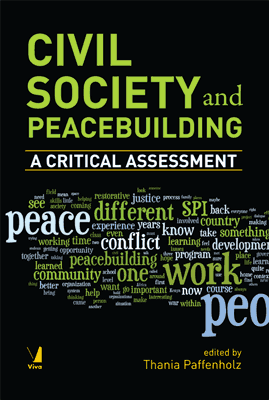People Building Peace II
People Building Peace II
Successful Stories of Civil Society
₹1,795.50 ₹1,995.00 Save: ₹199.50 (10%)
Go to cartISBN: 9789386385703
Bind: Paperback
Year: 2017
Pages: 706
Size: 5.75 x 9 Inch
Publisher: Lynne Rienner Publishers, Inc.
Published in India by: Viva Books
Exclusive Distributors: Viva Books
Sales Territory: India, Nepal, Pakistan, Bangladesh, Sri Lanka
Individuals can make a difference working for peace worldwide. That is the message of People Building Peace II, an inspiring collection of stories of how "ordinary" men and women have played a crucial part in conflict prevention and peacebuilding.
Thematic chapters, illustrated with compelling case studies, present new trends in the role of civil society in conflict transformation. The cases reflect the variety of activities initiated and sustained by a broad range of actors, including women's groups, youth groups, and faith-based organizations. Such topics as reconciliation, dialogue, networking, and traditional methods of conflict resolution are among the topics thoroughly explored, as are the successful initiatives of lesser-known NGOs.
The resulting rich tapestry, an outcome of the Global Partnership for the Prevention of Armed Conflict, is an invaluable compendium of best practices and lessons learned, and at the same time a stirring call to action.
Target Audience:
People interested in public administration, sociology and political science.
Contents:
Foreword, Kofi Annan
Acknowledgments
Introduction, Paul van Tongeren, Malin Brenk, Marte Hellema, and Juliette Verhoeven
Part I: Reflections
Chapter 1: Weaving the Web: Civil-Society Roles in Working with Conflict and Building Peace
Catherine Barnes
Personal Story: Kay Rala Xanana Gusmao
Chapter 2: Discourses on Peace Practices: Learning to Change by Learning from Change?
Cordula Reimann and Norbert Ropers
Chapter 3: Effective Regional Networks and Partnerships
Andr'ὲs Serbin
Chapter 4: UN-Civil-Society Interactions: Working Together for Peace
John Clark
Chapter 5: The War on Terror: Effects on Civil-Society Actors in the Field of Conflict Prevention and Peacebuilding
Kevin P. Clements
Chapter 6: People Building Peace: Key Messages and Essential Findings
Paul van Tongeren, Juliette Verhoeven, and Jim Wake
Part 2: Themes and Cases
Chapter 7: Women: Using the Gender Lens
Lisa Schirch and Manjrika Sewak
Personal Story: Queen Noor • Women Breaking the Silence: The Athwaas Initiative in Kashmir • The Other Clan: Save Somali Women and Children • Women Weaving Bougainville Together: Leitana Nehan Women's Development Agency in Papua New Guinea • The Fate of Disappeared Children: The Grandmothers of the Plaza de Mayo in Argentina • Women's Peace Activism in West Africa: The WIPNET Experience • Leaving Lebanon: The Four Mothers Movement in Israel
Chapter 8: Youth: Protagonists for Peace
L. Randolph Carter and Michael Shipler
Picking Up the Pieces: Jamaa in Burundi • And a Child Shall Lead: The Children's Movement for Peace and Return to Happiness in Colombia • Young Kosovars Help Themselves: The Kosovar Youth Council
Chapter 9: The Media: Reaching Hearts and Minds
Francis Rolt
Personal Story: John Marks • Changing Attitudes Through Children's Television: Nashe Maalo in Macedonia • Operation Fine Girl Exposes Sexual Violence: WITNESS in Sierra Leone • Unsung Heroes: Studio Ijambo in Burundi
Chapter 10: Faith-Based Organizations: The Religious Dimensions of Peacebuilding
Douglas Johnston
Struggling for a Just Peace: Naga Churches in Northeast India • The Pastor and the Imam: The Muslim-Christian Dialogue Forum in Nigeria • Step by Step on the Way to Peace: The Dhammayietra Peace Walk in Cambodia • Restoring the Power of Speech: The REMHI Initiative in Guatemala
Chapter 11: Education That Makes a Difference
Tricia S. Jones
Personal Story: David Hamburg • Food, Education, and Peacebuilding: Children's Learning Services in Sierra Leone • Committed to Building Peace: The City Montessori School in India • Uniting Children During War: Sawa-UNICEF in Lebanon • Managing Conflict at School: The Ohio Commission on Dispute Resolution and Conflict Management in the United States
Chapter 12: The Arts and Peacebuilding: Using Imagination and Creativity
John Paul Lederach
Using Creative Arts to Deglamorize War: Peacelinks in Sierra Leone • Artistic Responses to the Siege of Sarajevo: The Cellist and the Film Festival in Bosnia-Herzegovina
Chapter 13: The Peacebuilding Potential of Local Businesses
Nick Killick and Canan G??nd??z
Brokering Peace and Building the Nation: The National Business Initiative in South Africa • A Profitable Peace: The Confederation of British Industry in Northern Ireland • Planting Peace: Philippine Business for Social Progress
Chapter 14: Diasporas: Untapped Potential for Peacebuilding in the Homelands
Abdullah A. Mohamoud
Fear and Hope in Acholiland: Kacoke Madit in Uganda and the United Kingdom • Contributing to Peace at Home: The Berghof Foundation in Sri Lanka
Chapter 15: Civilian Peacekeepers: Creating a Safe Environment for Peacebuilding
Tim Wallis and Claudia Samayoa
An Experiment at Mixing Roles: The Balkan Peace Team in Croatia and Serbia/Kosovo • Protecting the Protectors: Peace Brigades International in Colombia • Human Shields to Limit Violence: Witness for Peace in Nicaragua • Grassroots and South-South Cooperation: Bantay Cease-fire in the Philippines
Chapter 16: Development: No Development Without Peace, No Peace Without Development
Malin Brenk and Hans van de Veen
Peace Aid: Norwegian Church Aid in Mali • A Journey Toward Peace: St. Xavier's Social Service Society in India
Chapter 17: Early Warning and Early Response: Preventing Violent Conflicts
Takwa Zebulon Suifon
Personal Story: Max van der Stoel • Managing Conflicts by Phone: The Mobile Phones Network in Northern Ireland • Working with the Local Wisdom: The National Council of Churches of Kenya Peace Program
Chapter 18: Traditional and Local Conflict Resolution
Jannie Malan
Clan Elders as Conflict Mediators: Somaliland • Revitalizing Tradition to Promote Reconciliation: The Gacaca Courts in Rwanda
Chapter 19: Dialogue-Based Processes: A Vehicle for Peacebuilding
Edward (Edy) Kaufman
Engaging the "Other": The Nansen Dialogue Network in the Balkans • Building Trust, Promoting Hope: The Families Forum Hello Peace Project in Israel and Palestine • Creating Expertise: The Oxford Research Group in the United Kingdom • Inside the Revolution of Roses: Georgia • Taking the Constitution to the People: The Citizens Constitutional Forum in Fiji
Chapter 20: Campaigning to Create Awareness: How to Influence People and Change the World
Rebecca Peters
Never Again: The Archdiocese of S'o Paulo and the World Council of Churches in Brazil • Making a Difference: The International Women Building Peace Campaign • Fighting Corruption: The Clean Election Campaign in Kenya • Rage Against the Regime: The Otpor Movement in Serbia • Protests Stop Devastating Nuclear Tests: The Nevada- Semipalatinsk Anti-Nuclear Movement in Kazakhstan • Lessons from Campaigns of the 1990s: Innovations in Humanitarian Advocacy
Chapter 21: Civil Society: Participating in Peace Processes
Celia McKeon
A Nonthreatening Approach to Peace: The Community of Sant? Egidio in Mozambique • Facilitating a Mutual Deescalation Process: Quakers and the Peace and Reconciliation Group in Northern Ireland • Engendering the Peace Process in West Africa: The Mano River Women's Peace Network • Small Steps Toward Reconciliation: The Joint Committee for Democratization and Conciliation in Moldova • A Second Way: Grupo Maryland Between Peru and Ecuador
Chapter 22: Disarmament, Demobilization, and Reintegration: Not Only a Job for Soldiers
Sami Faltas and Wolf-Christian Paes
Personal Story: Oscar Arias • Former Rebels Use Market Forces to Achieve Their Social Ideals: New Rainbow in Colombia • Transforming Arms into Ploughshares: The Christian Council of Mozambique • Fruits of War: Homies Unidos in El Salvador and the United States
Chapter 23: Reconciliation: Challenges, Responses, and the Role of Civil Society
Hizkias Assefa
Personal Story: Desmond Tutu • From Saying "Sorry" to a Journey of Healing: National Sorry Day in Australia • Listen to Understand: The Listening Project in Croatia • The Spirit of Caux: Moral Re-Armament and Initiatives for Change in Switzerland • Dialogue Spices Peace: Baku Bae in Indonesia
Index
About the Book
About the Global Partnership for the Prevention of Armed Conflict
About the European Centre for Conflict Prevention
About the Authors:
Paul van Tongeren is the founder and executive director of the European Centre for Conflict Prevention (ECCP). In 2002 he initiated the Global Partnership for the Prevention of Armed Conflict, an international network of organizations working in conflict prevention and peacebuilding worldwide. Together with the Global Partnership he organized a global process that resulted in a Global Action Agenda, presented at the global conference called "From Reaction to Prevention: Civil Society Forging Partnerships to Prevention Conflict and Build Peace," which took place in New York, from July 19 to 21,2005.
Malin Brenk works as a project officer for the Research Unit at the European Centre for Conflict Prevention (ECCP). She has a masters degree in Political Science from Lund University, Sweden, with a specialization in conflict theory, and her thesis examined NGOs strategies and ability to influence the UN. Prior to joining the ECCP she spent six months at INCORE (Centre for International Conflict Research) in Northern Ireland and at the Norwegian Peace Alliance in Oslo, Norway.

